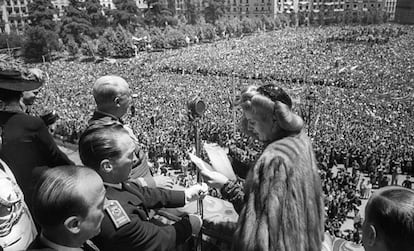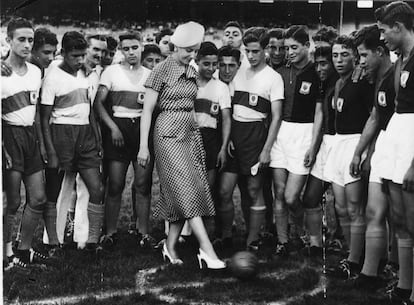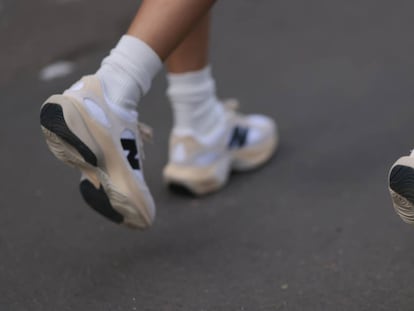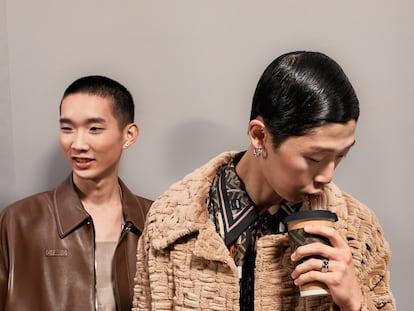‘The poor like to see me beautiful’: How Eva Perón used fashion as a political tool
A new book explores the evolution of the Argentine first lady, analyzing how she understood from an early age the vast power one’s image can hold

Eva Perón, read via her clothes. The Argentine politician is an icon of Latin American feminism. Much has been written about the woman, who was at one point an actress, throughout the years. Dozens of documentaries and movies have focused on her story. Nonetheless, many aspects of her life continue to be a mystery. Although her time on Earth was brief, having died at 33 years of age, she is one of the most important figures in the history of Argentina.
The book Evita frente al espejo: ensayos sobre moda, estilo y política en Eva Perón (Evita in front of the mirror: Essays on the fashion, style and politics of Eva Perón) gathers essays that explore that life and work of Perón through fashion, written by some of the greatest Argentine specialists of haute couture. “For the oligarchy, Perón was vulgar, a social climber who didn’t know how to dress, but that was a lie. Clothes allowed her to surf the prejudices surrounding social class,” explained the editor and author of the book, Marcelo Marino, in a presentation on Monday at the Casa América in Madrid, Spain. Although fashion was always the great protagonist of her political discourse, until now no one has written in such depth about the subject. Many still remember the phrase that Perón told Spanish dictator Francisco Franco during her 1947 European tour: “The poor like to see me beautiful. They don’t want their protector in an old, ill-fitting dress. They dream about me, and I cannot disappoint them.”

The director of Ampersand Ediciones, Ana Mosqueda, explained at the book’s presentation that the project was born as an attempt at understanding the character of Eva Perón in all her complexity, without falling prey to superficiality or partisanship, but rather via the underlying hypothesis of the political use she made of fashion. For the authors, the biggest challenge when it came to writing the book was in defining where history ends and where the myth begins that has been created around the figure of Evita. “Never before has fashion been so discussed in the context of a historic figure,” says Marino.
Clothing was always a key factor in the story of Perón, first as a way of overcoming prejudice surrounding her social class, and later in her rise to become first lady. Perón arrived in Buenos Aires when she was 16 years old to work as an actress and model, and this became the moment in which she discovered the power of fashion. “It allowed her to transform. She understood its power,” says Marino. During those first years, according to the book, Perón relied on dressmakers, collaborators, and assistants who helped her to create her own style.

Later on in her political career, fashion became an instrument of policy. One fabulous example was the European tour on which she embarked in 1947. One of the book’s author’s, Laura Zambrini, tells how internal matters in the Perón administration led to her decision to go on the tour. “A woman as young and beautiful as she was brought the crowds, which gave her a lot of visibility. She was quite disruptive for her era,” writes Zambrini.
Perón also had the intelligence to adapt to what she saw around her. Europe was experiencing post-war poverty and, when the first lady of Argentina arrived in Italy and took in this panorama, she decided to change her look, styling her hair in a bun. There, reads the book, Perón learned of the great European fashion houses, which would later seek her out to work with them.
The Argentine first lady was a client of designers like Christian Dior, Jacques Fath and the shoemaker Salvatore Ferragamo, among others. Her life was a complex alignment between the Peronist party line and the construction of her public image. “The haute couture on her body took on a meaning of resistance to power. The upper classes of society saw her as a vulgar woman,” writes Zambrini.

Marino says that Eva Perón’s link to luxury was seen by some as a contradiction, given her social platform regarding the poor. “It’s not easy to find another big name that has brought to haute couture a usage so intensely political and, at the same time, so transcendent.”
Others believe that Eva Perón’s wardrobe changes were studied, and in keeping with the activities that marked her political agenda. In Spain, she surprised many when, in the middle of a sultry spring, she showed up in a fur jacket to one of her multitudinous events. For Marino, this was an act of brilliance. “Fashion is about breaking rules, and she wanted to do just that in Madrid.” For her critics, it was a faux pas, given the precarious situation in which Spain had found itself after the Second World War. You can’t please them all, not even when it came to Evita.
It was these iconic outfits that Argentine designer Pablo Ramírez sent down a runway at the book’s presentation, a spectacular collection of 16 looks. In the show, the bun, the heels and the brooches accessorized tailored suits, and then the long dresses that have managed to endure throughout the ages as a symbol of fashion, in an enclave as perfectly suited as the Linares Palace. “Eva Perón might be the first influencer of the 20th century, an icon without precedent,” said Ramírez.
Many women in politics regard Perón as an influence. Just as she did, they utilize fashion as a weapon of political communication. Such was the case of Princess Diana and Jacqueline Kennedy. Nonetheless, for Marino, these figures hardly represent the same meaning of class conflict: “Evita was the image of Latin America’s transformation.”
Sign up for our weekly newsletter to get more English-language news coverage from EL PAÍS USA Edition
Tu suscripción se está usando en otro dispositivo
¿Quieres añadir otro usuario a tu suscripción?
Si continúas leyendo en este dispositivo, no se podrá leer en el otro.
FlechaTu suscripción se está usando en otro dispositivo y solo puedes acceder a EL PAÍS desde un dispositivo a la vez.
Si quieres compartir tu cuenta, cambia tu suscripción a la modalidad Premium, así podrás añadir otro usuario. Cada uno accederá con su propia cuenta de email, lo que os permitirá personalizar vuestra experiencia en EL PAÍS.
¿Tienes una suscripción de empresa? Accede aquí para contratar más cuentas.
En el caso de no saber quién está usando tu cuenta, te recomendamos cambiar tu contraseña aquí.
Si decides continuar compartiendo tu cuenta, este mensaje se mostrará en tu dispositivo y en el de la otra persona que está usando tu cuenta de forma indefinida, afectando a tu experiencia de lectura. Puedes consultar aquí los términos y condiciones de la suscripción digital.
More information
Archived In
Últimas noticias
Most viewed
- Sinaloa Cartel war is taking its toll on Los Chapitos
- Oona Chaplin: ‘I told James Cameron that I was living in a treehouse and starting a permaculture project with a friend’
- Reinhard Genzel, Nobel laureate in physics: ‘One-minute videos will never give you the truth’
- Why the price of coffee has skyrocketed: from Brazilian plantations to specialty coffee houses
- Silver prices are going crazy: This is what’s fueling the rally











































